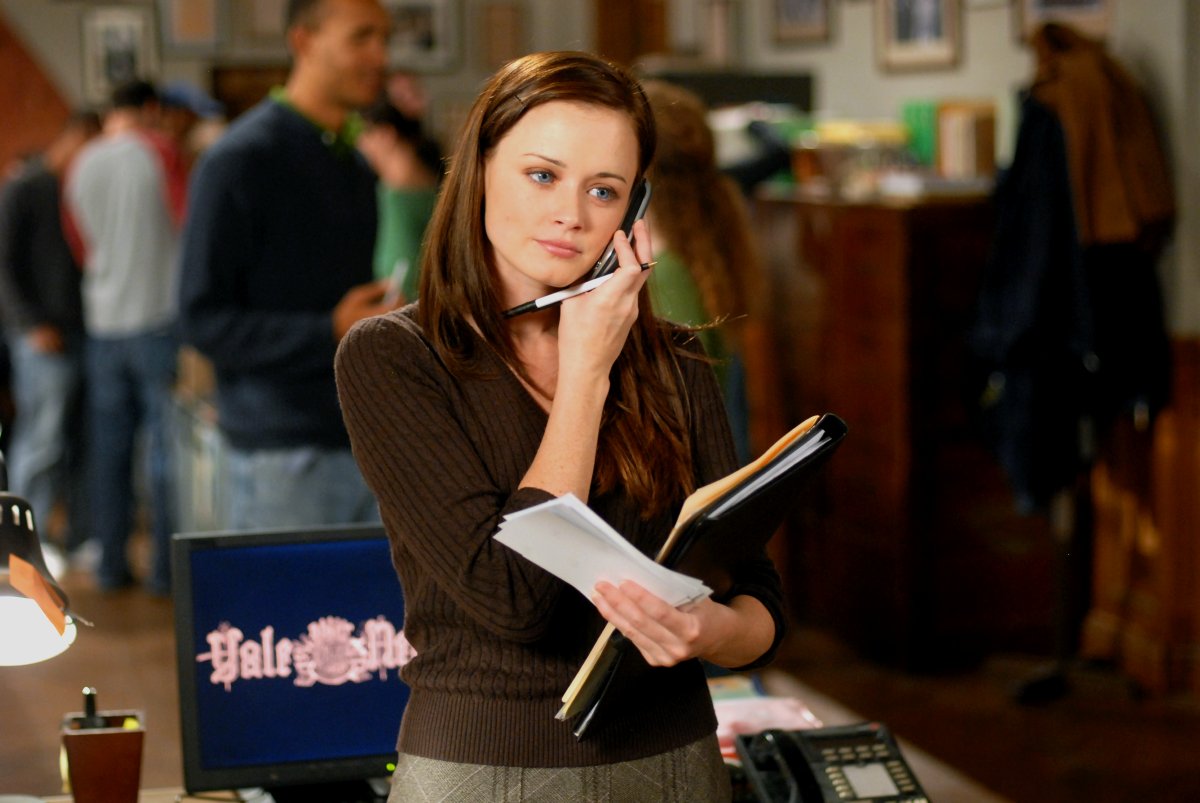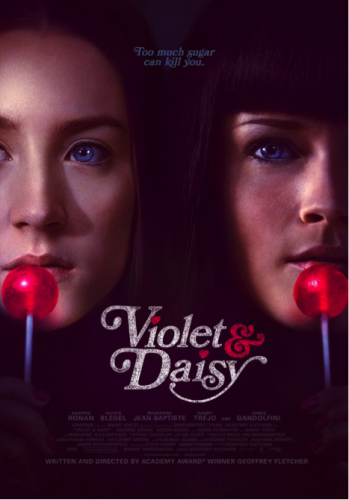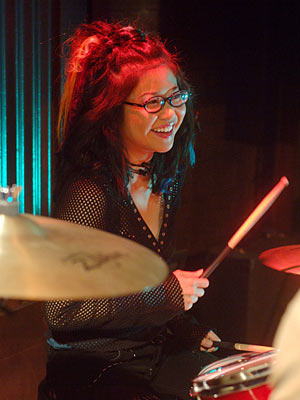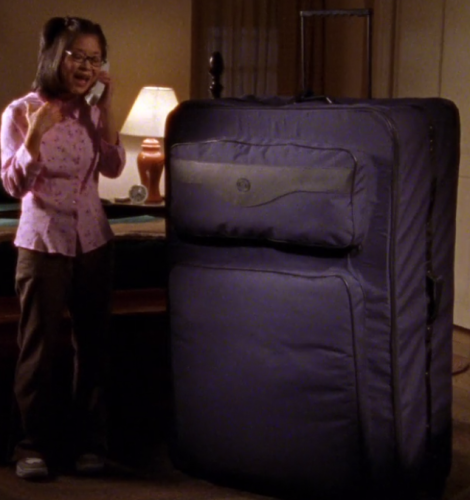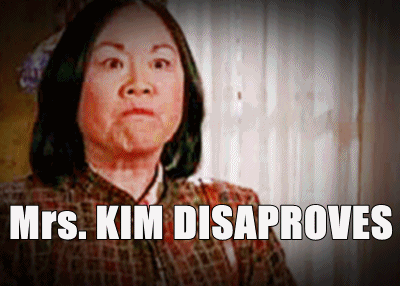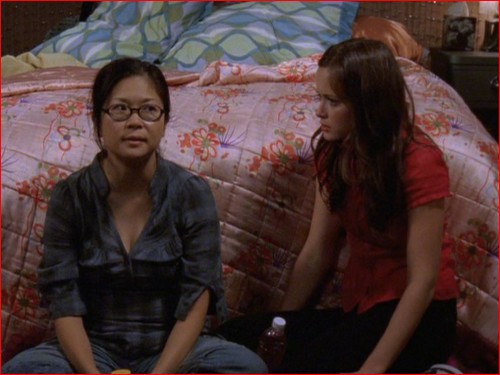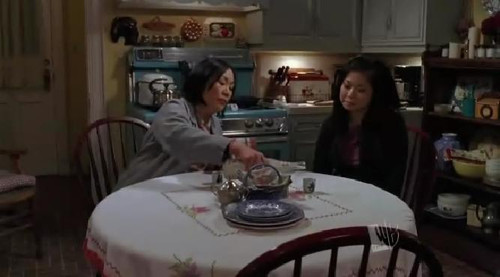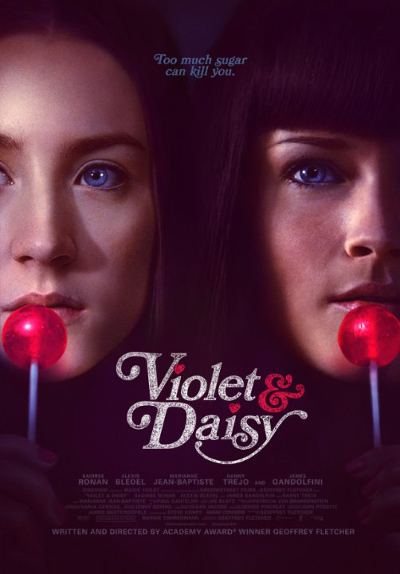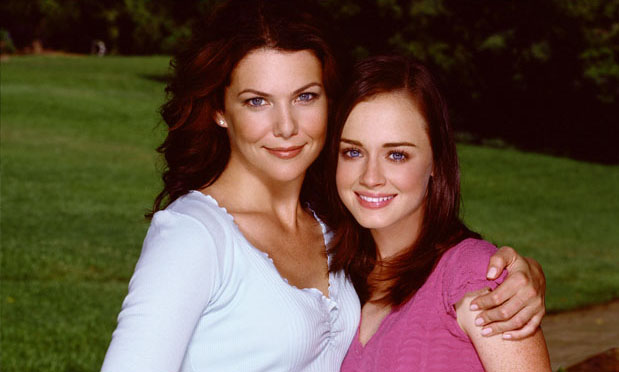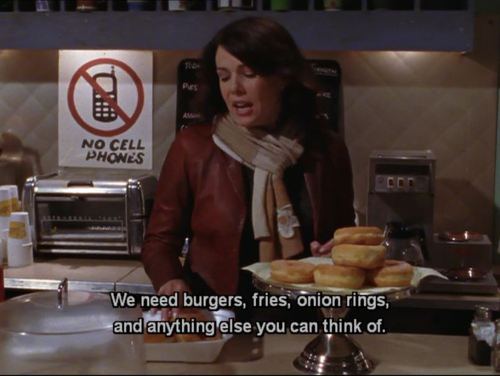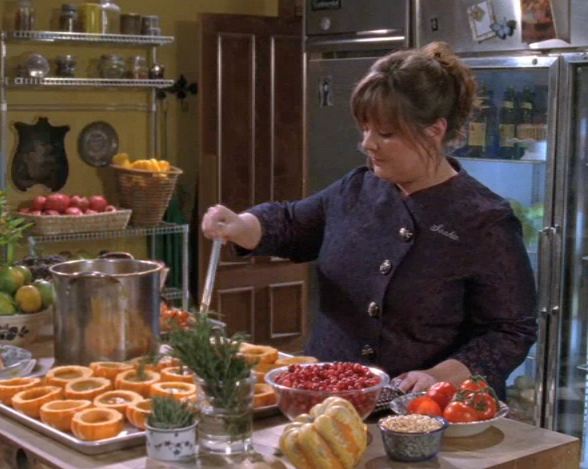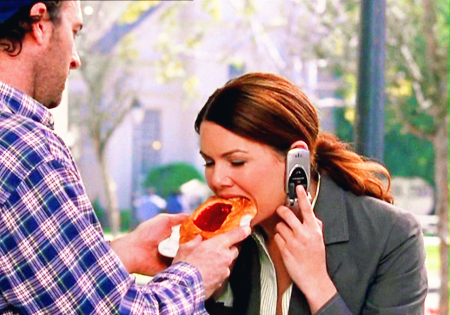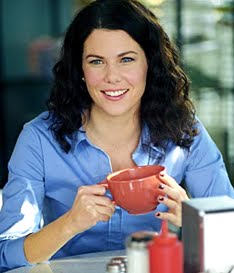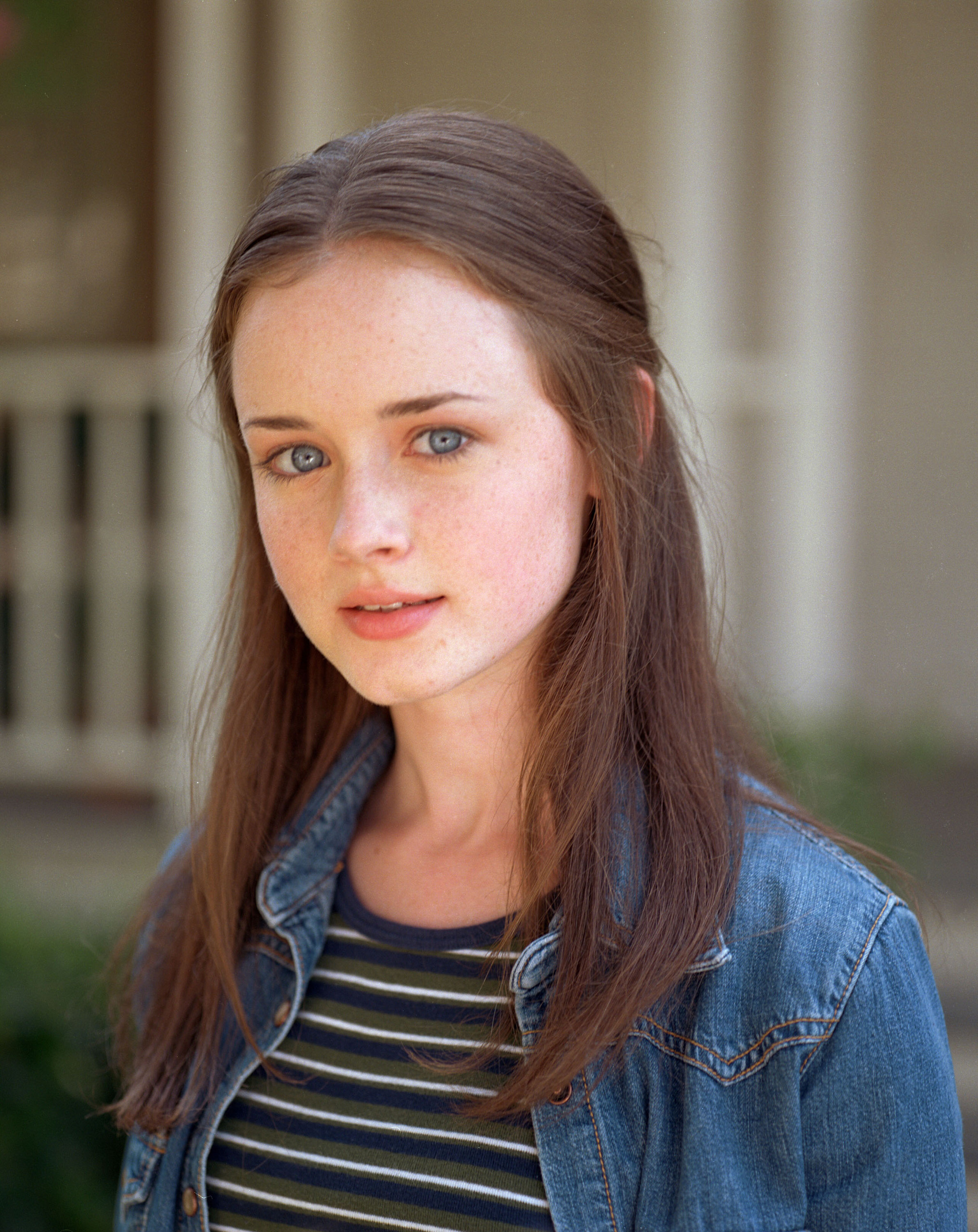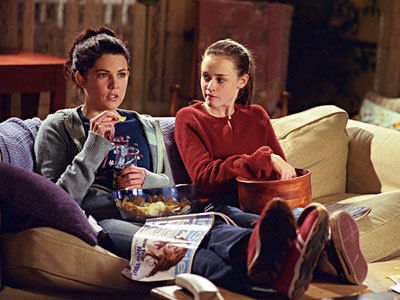This guest post written by Scarlett Harris appears as part of our theme week on Unpopular Opinions.
Like any pop cultural product that features archetypal women, viewers are apparently permitted to identify with only one of the Gilmore Girls: Lorelai or Rory. While there are personality traits from both mother and daughter Gilmore that I recognize in myself, I’ve never been a fan of Lorelai (Lauren Graham), so Rory (Alexis Bledel) it is. Like her, I’m bookish, introverted, and a writer. However, since the premiere of the revival, Gilmore Girls: A Year in the Life, there’s been a backlash of sorts to the original television series as a whole, but particularly to Rory and her entitled millennial status.
We rejoin Rory nine years after her graduation from Yale and her first reporting gig on the campaign trail for Barack Obama. What’s Rory been doing since then? Well, it’s hard to tell but the show definitely wants us to know that she’s a capital-W writer. The problem is, though, that the Gilmore Girls writers clearly have no idea what it’s like to be a journalist in 2016. First, who the hell has three phones? Second, who can afford to flit between London, New York, and Stars Hollow on an on-spec dime (ie. nothing)? And third, who coasts on their lone byline in an albeit prestigious publication like The New Yorker. Luke can get away with proudly printing Rory’s “Talk of the Town” piece on the back of his diner menu, but most writers know it’s all about the hustle and where the next paycheck is coming from. I’ve managed to have a couple of articles published in my dream publication, but from there I was looking to what’s next. There’s a difference between savoring a milestone and resting on your laurels, but it doesn’t appear that Rory knows that.
That’s because she’s never had to hustle; everything has been handed to her. She only watched her mother struggle to raise her on her own, and even then it’s established that Lorelai went to great pains not to expose Rory to her struggles. But when Rory’s met with what appears to be the first hurdle in her professional career (and we don’t really get a sense of what she’s been doing since covering Obama’s campaign in 2007 and The New Yorker), she goes running to Mitchum Huntzberger (Gregg Henry), a man the show vilified for so long for telling darling little Rory that she didn’t have what it took to be a writer. Though he is an asshole, he was kind of right. And having her suck up to him (through Logan no less: she doesn’t even have the intestinal fortitude to ask him to put in a good word for her at the hallowed Condé Nast personally) after establishing him as the Big Bad for the better part of fifteen years undoes a lot of character development.
To be fair, Rory is largely a product of her upbringing. Until the events of Gilmore Girls as we know it — Lorelai’s reconciliation with her rich parents so Rory can go to an expensive private school and then Yale — Rory was raised by an independent, struggling, small-town single mom. Whatever life lessons she learned there were swiftly erased by the ensuing plot developments: her rich grandparents and then her rich father paying for her education and European holidays, her rent-free accommodations, and breaks in school and work to “find herself” similarly bankrolled by Richard (Edward Herrmann), Emily (Kelly Bishop), and Logan (Matt Czuchry). Judging from social media, while much of A Year in the Life’s audience felt like slapping the painfully unself-aware Rory at several points throughout the revival, who among us would turn their noses up at the privilege to write their memoirs in a stately Connecticut home? Say what you want about her (and I have), but Lorelai is one of the only characters in the show who springs to mind.
Despite her flaws, I relate to Rory because she displays all my — and my generation’s — worst characteristics. The number one complaint about millennials is that we were raised to believe we were better than everyone else, that we should win the ultimate prize just for trying, and that things should be handed to us. Then the global financial crisis hit and we had to reassess everything we had been led to believe was true. I went to college for professional writing and thought I would have a high-powered career in magazines. Instead, I’ve spent the intervening years hustling for the smattering of bylines I’ve had. I struggle with incredulity when my pitches are rejected because I, like Rory, have been socialized to believe that I am a special snowflake and what I think and feel matters so much that any publication would be lucky to print my words.
But some of us have also had a lot of safety nets put in place for these inevitable failures. Like Rory, I’ve also moved back home (to a house that I won’t inherent as my parents have no assets) to save money for a long-term overseas trip, so I wasn’t really “back,” also like Rory. And what my mum can’t offer in financial support she makes up for in home-cooked meals (sorry, no pizza and Tater Tots) and dog-sitting, so it’s not like I’m at a destitute loss compared to Rory’s multiple financial backers. But it took me a long time to reckon with the fact that my parents couldn’t support me financially if I took a misstep like Rory has and, as a single woman with no designs on getting into a relationship anytime soon, I don’t have the emotional and financial support of a partner. The Emily to my Rory has six children, twelve grandchildren and countless great-grandchildren, so there’s likely no inheritance coming my way. And I’m fine with that now. I know that anything I do or have is because I worked for it. The rare things I achieve through luck make me uncomfortable: am I entitled to them if I didn’t work for them? Can Rory Gilmore say the same?
It’s unlikely that the inevitable second/ninth season of Gilmore Girls will address Rory’s privilege: her pregnancy (#LastFourWords) is a convenient scapegoat for her to escape her floundering writing career and throw herself into being a mother. Not that women can’t have both, as Lorelai did, but it seems more like an excuse for Rory to give up than a challenge for her. And we all know what happens to women (again, women who aren’t Lorelai) that teeter outside the guidelines society/Stars Hollow prescribes for them: pregnant with twins the first time they have sex, thus informing their negative opinion of the act, or pregnant with a child they didn’t want because they thought our husband had a vasectomy. Like other shows that depict millennials (and particularly millennial women) as entitled layabouts, Gilmore Girls: A Year in the Life does nothing to dispel this stereotype.
See also at Bitch Flicks:
Why Lorelai Gilmore from Gilmore Girls Is a “Cool Girl”
Emily Gilmore and the Humanization of Bad Mothers
The Kims Next Door: Korean Identity on Gilmore Girls
Pop-Tarts and Pizza: Food, Gender, and Class in Gilmore Girls
The Paradox of the Gilmore Diet in Gilmore Girls
Scarlett Harris is an Australian writer based in New York City. You can follow her on Twitter @ScarlettEHarris and read her previous published work at her website The Scarlett Woman.
